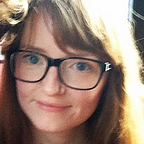How do you build an internal accelerator — on a shoestring budget?
Action for Children is a charity working all over the UK to ensure children have the best possible start in life, good mental health, and safe and loving homes.
Our services organise fostering placements, run community children’s centres and provide mental health support in schools among many more. We have 150 years of experience of serving the needs of vulnerable children and support 300,000 children in the UK every year — powered by 5,000 amazing staff.
The Digital & Innovation team is a small part of that much bigger whole. Our role is to engage supporters online, create new fundraising products and develop digital services to directly help children and families.
Our vision for digital services is simple:
We believe we can use digital services to meet common needs. We can use our 150 years of expertise, coupled with user-first approach to create and promote tools that will make a difference in children’s lives.
Excitingly, we can also learn from the data we collect and use both qualitative and quantitative results to get richer understanding and insights into children’s needs, and what works for them.
The team has spent the past couple of years building our knowledge and capability of digital service design. And creating and curating digital tools to deliver much-needed support to children and families — we have four in prototype or pilot right now.
5 things we’ve learned
1. Be scrappy & resourceful
The vision might be huge and overwhelming, but we couldn’t do everything. We didn’t have the people or the money. So we were forced to be super resourceful. What we really needed was to start to explore possibilities, make connections and research the digital services marketplace.
We found the civil service fast stream secondment programme — lots of very clever people looking for secondment opportunities in charities. We’ve had three fast-streamers join us for six months each. They’ve worked on early years and mental health & wellbeing products and produced invaluable research and insight.
We partnered with CAST — the Centre for the Acceleration of Social Technology — we went on their brilliant accelerator programme, Fuse, where we learned about product development, stakeholder management and the service design process.
We’re also very grateful for much-needed funding from Nominet Trust and through our corporate partnership with CBRE, who support our Fostering work.
2. Surface ideas
We look everywhere for ideas. The political context throws up a pretty clear problem space. With children’s centres closing, we spoke with parents and family support workers to find out what the impact was on their lives, and developed an online support tool to tackle some of the unmet need.
Separately, colleagues in Children’s Services have come up with a great grassroots innovation programme. AfC’s Dragon’s Den allows anyone in the organisation to bring their ideas to senior leadership, and hopefully get funding for a prototype or pilot. We’ve worked with the committed and driven people who pitched ideas at Dragon’s Den to get funding and build the products their service users need.
On top of that, the discovery and research around each problem space, and working with our children’s services colleagues always throws up dozens more potential ideas and unmet needs. Our backlog gets bigger by the day!
3. Think outside in, not inside out…
We learned to always start with our users and understand their needs and wants before creating anything.
We test quickly and often, because getting what we’ve designed in front of the people it’s intended for is the best way to find out whether it does the job, and whether they want to use it.
As well as being satisfied a product is right for our users we need to make sure we’re set up to deliver it. We ask if we’re the right people to do this, whether we’ve got a strong partnership with children’s services colleagues, and can we sustain this product once it’s delivered.
4. If it exists, use it
There’s no point rebuilding something that already exists, so whenever we hear a problem, we do our research and check out the marketplace. Is there a product we could be using that does 80% of the job? We’ll look for partnerships, and build on existing technology, rather than reinventing the wheel.
5. Start small. Really really small. Smaller.
The number of things that we could do is overwhelming. We could spend several years and millions of pounds trying to co-ordinate a full-scale digital transformation and change programme. Instead we’ve taken a very small corner of what we do, and aimed to prove that digital services can work, can be adopted and can deliver great outcomes for service users. It’s a great platform to start from, and has helped build understanding and buy-in across the organisation.
